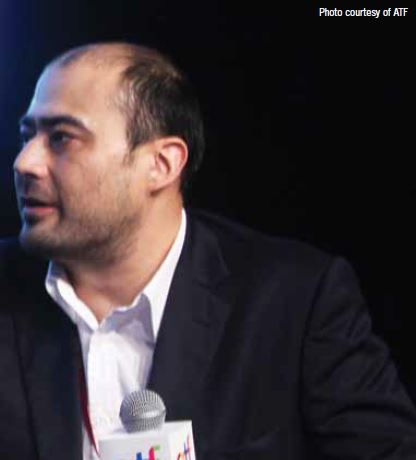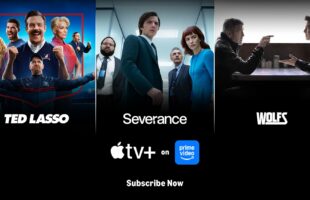
15 years ago, it was very simple, we just had to count TVs and DVD players but now, we have to count everything from tablets to mobile handsets to games consoles to OTT streamers and increasingly VR, which has mounted its’ place so it’s much more complicated than it has been for a number of years.
The Asia-Pacific region is very interesting to us because it’s still one of the markets which many individual territories still have a lot of great potential for pay-TV. Many of the markets are under-penetrated for pay-TV and we think that makes it an interesting region in that sense when we look at what’s going on in the U.S. or Western Europe. We see a lot of very mature markets in which pay- TV penetration has peaked and OTT business models have also reached maturity in those markets.
We are seeing growth markets in Asia. We are doing a lot of primary research in Asia as well. We predominately focus on quantitative analysis, market sizing and forecasting but actually given the level of complexity and how fast everything is changing at the moment, to really get into the details of how people are buying and interacting with visual entertainment, there’s no alternative but to go into the marketplace and ask as many of them as possible. Certainly, we’ve got a couple of things coming up which encompasses Indonesia, China and Australia. We’re embarking on quite a large primary research exercise around the entire question of why people buy multi-play bundles. Television or visual entertainment is a core part of the multi-play bundle in many parts of the world but in our view, the multi-play bundle has actually changed very little since it was first introduced over a decade ago from the single play, dual play, triple play and we’ve got quad play recently. But it’s a very slow process of evolution.
If you look at some of the needs of the younger demographics, especially those who don’t put much emphasis on linear TV, and we think to ourselves, perhaps, there’s some potential to really evolve the bundling model for example, why should every single model include a relatively expensive pay-TV component? For younger audiences, it’ll be more appropriate to have a mixture of fixed and mobile broadband plus some OTT entertainment sources like a kind of new age bundle. We’ve seen some signs of operators wanting to experiment with the bundles; we see in the U.S., the emergence of the skinny bundling strategy, we see people offering fixed broadband and predominantly Netflix.
I think there’s potential for many other OTT services to come into that type of arrangement as well but we really want to know why would someone buy a bundle in the first place? Do they expect to spend more or less and why is that so? What would drive them to spend more? What would drive them to leave their current operator and Leading analyst house across converging media says as companies increasingly bundle and aggregate content and services, they will likely respond positively to vendors with technology that addresses the myriad challenges they face. Edward Barton, Ovum’s Practice Leader for TV tells K. Dass his observation of current video streaming strategies in the market. Changing Platforms go to a new bundle? These are all questions that require a lot of primary research so we’re doing that across 12-13 markets across the world and some of the important ones are the Asian market. I mentioned early, our coverage extends to 200 markets across the world. To us, Myanmar is as important as the U.S., we don’t discriminate.
Digital distribution is not restricted to OTT alone. There is YouTube, Netflix and other catch-up services. We increasingly see broadcasters and pay-TV operators offering OTT versions of their servicers. They are getting involved as well. If we take Netflix for example, where they are getting their content from? They are licensing it from the traditional broadcast television industry so we don’t look at it as a zero-sum game. We are moving towards a model where we stop obsessing with the distribution technologies because it’s all just content. It might come through a different screen but primarily, the audience wants to watch something they yearn for.
I’ve covered the media and entertainment as an analyst, we’re quite distinct from Telco analyst or Technology analyst who tends to regard content as a cause, as a substitutable product but it is not. If someone wants to watch Arsenal playing an EPL match or the latest episode of Game Of Thrones or the latest Batman movie, these are not substitutable products so fixed broadband – we would argue that its’ substitutable if you get it from a different operator, it’s still going to be largely the same and most people are still going to be okay with it but if you say to them, ‘okay you want to watch the EPL match, I don’t have EPL but I’ve got Bundesliga’ they will reject that. It’s not entertainment, it’s not substitutable which I think is one of the reasons why we think it has such a fantastic ability to protect its’ value especially in content rights negotiations.
One of the features of the Asian television industry which seems to appear larger than other major region is that Asia is a lot closer to the regulatory systems. This is a fact of life on most nations here. Regulators perform a very important social and technical function. But the Chinese market has relatively strict content restrictions. They look into the amount of foreign-produced content, individual broadcasters and streaming services in the country. In Indonesia, one of the major ISP did not want to carry Netflix because it was yet to be licensed by the regulator in 2016. So, we tend to see things like that more in this region than the other parts of the world.
I think that Asian broadcasters might be more pronounced than other broadcasters would be in terms of the general pressure of Live TV audiences. They look at what younger people are watching, they skew sharply towards mobile and OTT viewing and we see it more pronounced in certain Asian markets than the western market.








